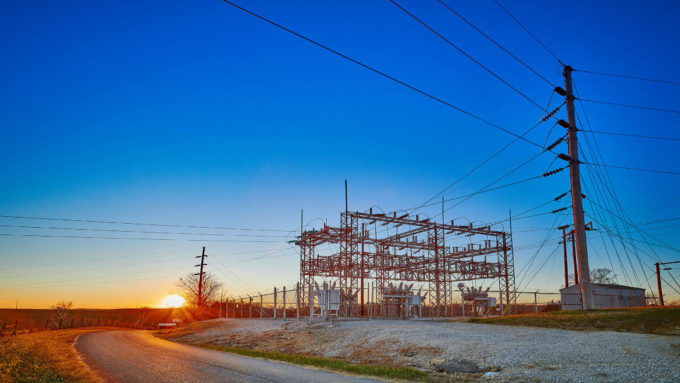Case Study
The Senstar LM100 provides two key security functions vital to any perimeter security solution

Senstar has been helping a major US electrical utility company protect its sites for many years, starting with the FlexZone® ranging fence-mounted intrusion detection system and now the Senstar LM100™ hybrid perimeter intrusion detection and intelligent lighting system.
Since 2013, FlexZone has been installed at 18 of the company’s Tier-1 transmission substation sites. FlexZone is part of multi-layered security solutions which also include cameras, video analytics, public address systems, and LED perimeter lighting. The sites are remotely monitored at a central monitoring station.
FlexZone has been very successful and ‘‘is one of our Command Center operators’ favorite security modules’’, says the company’s security adminstrator. (See 2016 case study).
One of the reasons FlexZone was selected was because of its easy integration with other systems. In this case, it is integrated with lighting systems to deter and detect intrusion attempts. When an intrusion alarm is triggered by FlexZone, additional lighting turns on and a security procedure is activated.
But Why Use Two Systems When The Job Can Be Done By One?
The Senstar LM100 combines deterrence and detection in one cutting-edge product. Added to Senstar’s product portfolio in 2017, the Senstar LM100 is the first-of-its kind in the security market.
When the utility company was first introduced to the Senstar LM100, a cost analysis determined they could save $80,000 per site. The savings are a result of the reduction of electrical requirements, conduit, grounding, and associated labor, as well as the removal of certain equipment from project scope that are required for the two system integration.
“The LM100 combines all of that stuff (that the two systems provide) but saves us a bunch of money,” said the utility company’s security administrator “It is also simpler to integrate and has better functionality.”
The Senstar LM100’s perimeter LED-based lighting acts as an initial deterrent. If an intruder persists and an attempt to cut, climb or otherwise break through the fence is detected, the closest luminaire begins to strobe and an alert is sent via a security management system. The intruder knows immediately they have been detected and that their exact location is known by security and others in the vicinity.
The LM100’s high color rendering (CRI) index maximizes camera performance, providing clear images of the intrusion attempt so security personnel at the monitoring station can quickly assess the situation and initiate an appropriate response.
Layers, Layers, Layers – A Tall Fence Is Not Enough
While others in the utility industry simply install taller fences in the hopes of preventing crime such as theft of copper wire and tools, the security administrator has a different approach. He focuses on adding multiple layers of security to his eight-foot perimeter fences to provide multiple means to detect intrusions, provide context, and respond appropriately.
“If someone is determined to get into a site, a fancy fence won’t stop them,” said the security administrator. “Why would I spend $1 million on a 10 foot fence that someone can climb over with a 12 foot ladder? More layers, more redundancy.”
Working With Senstar
Since standardizing on Senstar, the utility company can send its site layout to its system integrator and the process unfolds with few issues. “It’s been incredibly easy,” said the security administrator.
When asked about his experience with Senstar support, he said “I’ve never had to use it! This stuff goes in and once it’s dialed into the right sensitivity, it just works. (Senstar systems) definitely require the least maintenance of the bunch.”
Three Sites And Counting
The Senstar LM100 is now installed at three of the utility company’s sites, with an additional 43 other sites planned.
